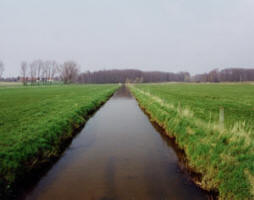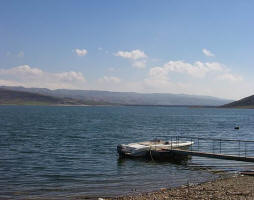 Ecosystem resilience despite large-scale altered hydroclimatic conditions
Ecosystem resilience despite large-scale altered hydroclimatic conditions
Climate change is predicted to increase both drought frequency and duration, and when coupled with substantial warming, will establish a new hydroclimatological model for many regions1. Large-scale, warm droughts have recently occurred in North America, Africa, Europe, Amazonia and Australia, resulting in major effects on terrestrial ecosystems, carbon balance and food security2, 3. Here we compare the functional response of above-ground net primary production to contrasting hydroclimatic periods in the late twentieth century (1975–1998), and drier, warmer conditions in the early twenty-first century (2000–2009) in the Northern and Southern Hemispheres. We find a common ecosystem water-use efficiency (WUEe: above-ground net primary production/evapotranspiration) across biomes ranging from grassland to forest that indicates an intrinsic system sensitivity to water availability across rainfall regimes, regardless of hydroclimatic conditions. We found higher WUEe in drier years that increased significantly with drought to a maximum WUEe across all biomes; and a minimum native state in wetter years that was common across hydroclimatic periods. This indicates biome-scale resilience to the interannual variability associated with the early twenty-first century drought—that is, the capacity to tolerate low, annual precipitation and to respond to subsequent periods of favourable water balance. These findings provide a conceptual model of ecosystem properties at the decadal scale applicable to the widespread altered hydroclimatic conditions that are predicted for later this century. Understanding the hydroclimatic threshold that will break down ecosystem resilience and alter maximum WUEe may allow us to predict land-surface consequences as large regions become more arid, starting with water-limited, low-productivity grasslands.
--
PDF files
- Supplementary Information (976K)
-
This file contains Supplementary Figures 1-4, Supplementary Tables 1-3 and additional references.
| Contact information |
Guillermo E. Ponce Campos, M. Susan Moran, Alfredo Huete, Yongguang Zhang, Cynthia Bresloff, Travis E. Huxman, Derek Eamus, David D. Bosch, Anthony R. Buda, Stacey A. Gunter, Tamara Heartsill Scalley, Stanley G. Kitchen, Mitchel P. McClaran, W. Henry McNab, Diane S. Montoya, Jack A. Morgan, Debra P. C. Peters, E. John Sadler, Mark S. Seyfried & Patrick J. Starks: Nature 494, 349–352 (21 February 2013) doi:10.1038/nature11836
(email: http://www.nature.com/nature/foxtrot/svc/authoremailform?doi=10.1038/nature11836&file=/nature/journal/v494/n7437/full/nature11836.html&title=Ecosystem+resilience+despite+large-scale+altered+hydroclimatic+conditions&author=Guillermo+E.+Ponce+Campos) |
|---|---|
| News type | Inbrief |
| File link |
http://www.nature.com/nature/journal/v494/n7437/full/nature11836.html?WT.ec_id=NATURE-20130221 |
| Source of information | NATURE |
| Keyword(s) | Ecosystem ecology, Climate change impacts, water-use efficiency, water availability, rainfall regimes, water balance, hydroclimatic conditions, Ecosystem resilience |
| Subject(s) | HYDRAULICS - HYDROLOGY , INFORMATION - COMPUTER SCIENCES , MEASUREMENTS AND INSTRUMENTATION , METHTODOLOGY - STATISTICS - DECISION AID , NATURAL MEDIUM , PREVENTION AND NUISANCES POLLUTION , RISKS AND CLIMATOLOGY , WATER DEMAND |
| Relation | http://www.nature.com/nature/journal/v494/n7437/extref/nature11836-s1.pdf |
| Geographical coverage | n/a |
| News date | 21/02/2013 |
| Working language(s) | ENGLISH |
 you are not logged in
you are not logged in





